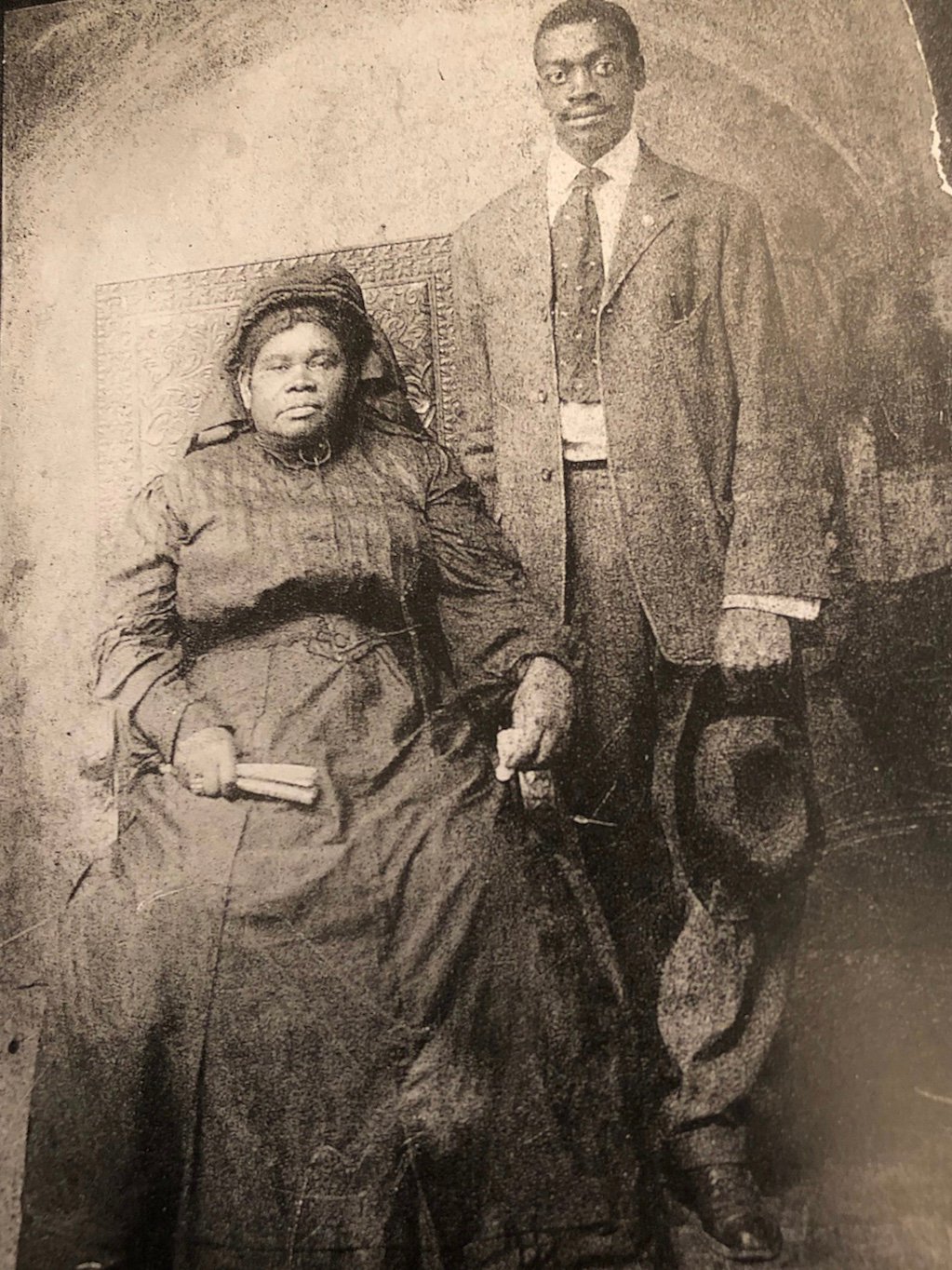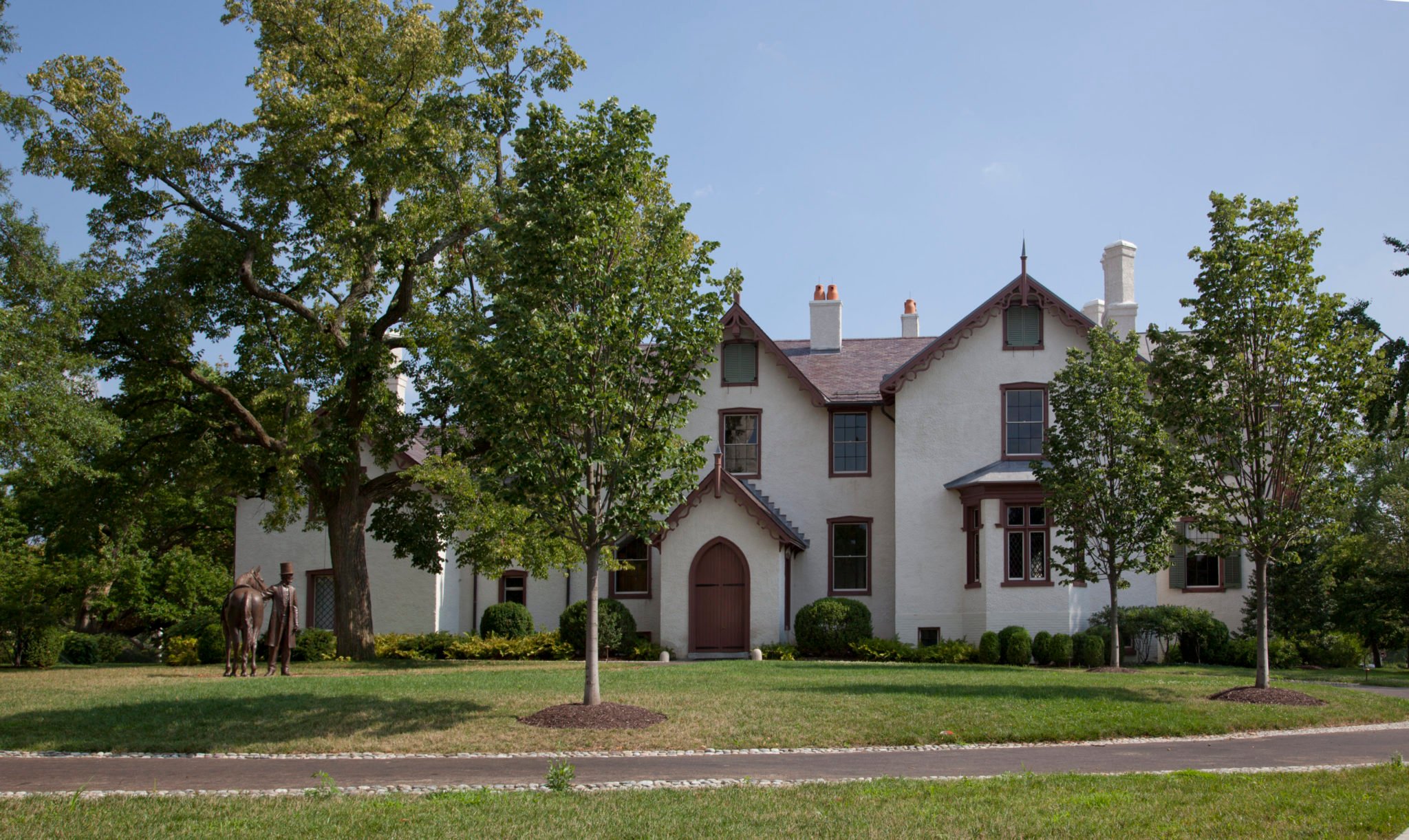The statue you know rises 29 feet in the air, solemn and godlike, seated inside the Lincoln Memorial on the Mall. But consider, for a moment, a different Lincoln image. This modest statue is located five or so miles away, and there’s no massive platform, no imposing set of stairs. It’s just a man standing next to his horse, life-size and frozen in a routine moment: Lincoln as a human being.
The Lincoln Memorial is one of DC’s most famous attractions, while this other statue is decidedly off the tourist track. But if you want to spend some time contemplating the meaning of the great President’s legacy, here is the one to seek out. It stands in front of President Lincoln’s Cottage, a Gothic Revival house near Petworth where the President and his family spent many months during his tenure in office. The statue captures Lincoln as he looked on those anxious summer mornings when he would saddle up and gallop off toward the White House. And the house itself, which is open to the public, offers a similarly relatable view of the President and his family.
In a city overstuffed with history, Lincoln’s Cottage is one of DC’s most fascinating places, a 179-year-old structure that shrinks a presidential giant down to comprehensible size, in the process giving vivid scale to his burdens and accomplishments. “I mean, there is something chilling about going into the Lincoln Memorial and seeing him seated there like a god,” says Michael Atwood Mason, the cottage’s new CEO and executive director. “It’s incredibly powerful. But there’s a different kind of power in seeing him here in all of his complexity.”
A tour of the house brings Lincoln to life in a way that’s hard to shake. Here he is in the parlor, you imagine, urgently conferring with Edwin Stanton or William Seward. That’s him on the porch, gazing across the expansive property toward the Capitol building. He’s there with you when you walk up the main staircase, gripping the same banister that bore Lincoln’s weight as he trudged to bed each weary night.
Visiting Lincoln’s Cottage is a different experience than many such historic-house tours, for one notable reason: There’s very little in it. The First Couple carted furniture back and forth with them from the White House, so the Lincoln-era residence had few permanent furnishings. Rather than bring in reproductions, the modern-day cottage features rooms that are mostly unadorned. Yet in a strange way, the emptiness actually helps you feel history’s pull, especially with the assistance of audio interludes that play in various locations and raise the home’s ghosts in a way that old furniture never could.
Yet as historic sites go, Lincoln’s Cottage remains oddly underappreciated. While nearly 8 million visitors filed through the Lincoln Memorial in 2019, just 34,000 came to the cottage during the same period. Mason, who started in September, is eager to change that, and one of his first tasks is to concoct a plan to raise the place’s profile.
Mason is keenly aware of the issue, having himself learned about Lincoln’s summer home only a few years ago when his kids went there on a school trip. “There’s no question that we’re confused by why so many people haven’t heard of the cottage,” he said recently, sitting behind the desk of his office in a separate building near the house. “For some reason, it isn’t sticking in people’s consciousness.”
Lincoln’s Cottage has been open to the public only since 2008, which is one reason it’s not as well known as it should be. Built in 1842 for banker George W. Riggs, the 34-room house (“cottage” is apparently in the eye of the beholder) was acquired by the federal government about ten years later. A home for retired and disabled soldiers was then built next to the cottage; it remains there today.
James Buchanan was the first President to spend time on the property, though he stayed in a different house. The Lincolns lived there during the summer and fall for three years, starting in 1862. The location remained a favored retreat up to the end: The President’s last visit, a quick trip out and back, was on April 13, 1865—the day before he was shot.
In some ways, the cottage was a place of respite for him and Mary Todd Lincoln, especially after the death, in early 1862 from typhoid fever, of their 11-year-old son, Willie. But there was no escaping the burdens of the war. The property’s burial ground served as a precursor to Arlington National Cemetery, and Lincoln was faced with the terrible reality of his decisions as he witnessed a daily stream of burials—around 8,000 on the site during the course of the war. “You just imagine the impact of Lincoln riding here every evening and seeing the Civil War dead being buried basically in his front yard,” says the cottage’s director of programming, Callie Hawkins. “People have the idea of this as a retreat, but in many ways it brought him closer to the war.”
Walt Whitman once described Lincoln’s grim countenance as the President rode down Vermont Avenue near L Street one morning in 1863 on his way from the cottage to the White House. The poet noted his “dark brown face, with the deep-cut lines, the eyes, always to me with a deep latent sadness in the expression.”
Following Lincoln’s assassination, two more Presidents—Rutherford B. Hayes and Chester A. Arthur—adopted the house as a summer residence, after which the retirement home next door took it over. During the 20th century, it had many functions: a dormitory, an infirmary, and even a bar for residents called the Lincoln Lounge. At one point, the first-floor parlor where the Lincolns met visitors was turned into a restroom, complete with stalls and green industrial tiles.
There had been efforts for decades to restore the house and open it to visitors, but nothing ever quite clicked. In 2000, the National Trust for Historic Preservation included the cottage on its list of the country’s 11 Most Endangered Places. Finally, that same year, President Clinton designated it a National Monument, and the National Trust undertook the effort to return it to its 19th-century state. Lincoln’s Cottage opened following an eight-year, $15-million restoration. It was the first time the general public had been able to see it.
Now Mason’s big challenge is to get more people through the door. A lifelong history fanatic with a PhD in folklore, the new CEO—who grew up with his mother near Annapolis but also spent a lot of time with his father, an Episcopal priest in and around DC—previously was director of exhibitions at the National Museum of Natural History and director of the Smithsonian Center for Folklife and Cultural Heritage. Some of his early plans seem fairly routine, such as finding new ways to engage with residents in the nearby neighborhoods or injecting more money into marketing efforts.
But beyond those kinds of practical strategies, Mason wants to help people see the historic site not just as a location where things happened long ago but as a place to think about what Lincoln struggled with. “We know the story resonates deeply, whether you’re talking about deep political divisions that are dividing families, whether you’re talking about issues of race and inequality, whether you’re talking about immigration, whether you’re talking about what our national response should be to Native American genocide,” he says. “All of those things have a place here and were connected to Lincoln in one way or another. We are committed to keeping Lincoln’s ideas front and center—and using them to help in the larger struggle for freedom.”
Toward the end of a tour of Lincoln’s Cottage, you’ll come to a large room on the back of the house, furnished with little more than a replica of Lincoln’s desk. (The original sits in the White House.) Here is where the President slept during the summer of 1862, when he was crafting one of our country’s most consequential documents: the Emancipation Proclamation, which freed enslaved people in Confederate states and proved to be a crucial first step toward abolition. Lincoln likely spent long hours here, sitting at his desk while he agonized over language and details that he knew would have profound repercussions. “I think this is as important a room as any room in any place in American history,” says Hawkins.

Her opinion was no doubt shared by Anna Harrison Chase, whose story was chronicled in a remarkable 1936 article in the Washington Post. Enslaved in Caroline County, Virginia, Chase was able to escape in early 1862 and led her family to Washington. Decades later, at age 92, she decided to pay tribute to “Father Abraham,” as she called him, by walking from her home near Logan Circle up to Lincoln’s Cottage. (Incidentally, Union general John A. Logan, for whom the circle is named, is buried in the adjacent cemetery.) “I used to see Mr. Lincoln almost every day riding out to the Soldiers’ Home that summer,” Chase told the Post. “Of course, we did not know what he was doing, but he was such a great man. And I can remember how we laughed and cried when he set the slaves free.”
One of Chase’s great-great-grandsons, Lloyd S. Chase III, visited the cottage for the first time a few years ago, and the symbolic weight of the place hit him hard. “I never knew it was sitting right there until the day I showed up,” says Chase, who grew up in DC and now lives near Nashville. “Walking into the actual cottage and being in the same space that Lincoln was, being in the same space that my great-great-grandmother was? You feel something. That gave me goose bumps and chills. Here is a woman who even in her nineties walked two miles in the dead of winter to the home of the man that wrote the Emancipation Proclamation. She had to do it. This is one of the strongest women I’ve ever known about. And she happens to be my great-great-grandmother.”
Chase also felt the tug of Lincoln’s presence. “I walked out onto the back porch looking over DC,” he says. “I wanted to put myself in his spot to see what he saw as the country was changing, as he was trying to figure out what he was going to do to bring this country together.”
That kind of reaction is common among visitors, even if they don’t have an ancestor who courageously escaped enslavement. “So many things that we’re struggling with now stem from the legacies of slavery, the legacies of the Civil War, and what Lincoln described as the ‘unfinished work,’ ” says Hawkins. “I think that we can leave here feeling daunted by that or empowered by that. And we have a lot of evidence that suggests that our visitors leave here empowered.”
Still, walking around the site, it’s hard not to be struck by grimmer thoughts. The Lincoln Memorial treats the terrible events of that era as something distant and antique. At Lincoln’s Cottage, the history feels alive, suspended in the atmosphere rather than muted by the comforting distance of a memorial. Our country’s intractable divisions live on—as do the echoes of slavery. If you visit this old home and roam through the rooms where Lincoln paced, his presence still eerily palpable, you will be confronted, in some heavy way, with a hard truth about our country’s greatest crime: It didn’t happen all that long ago.
This article appears in the December 2021 issue of Washingtonian.


















